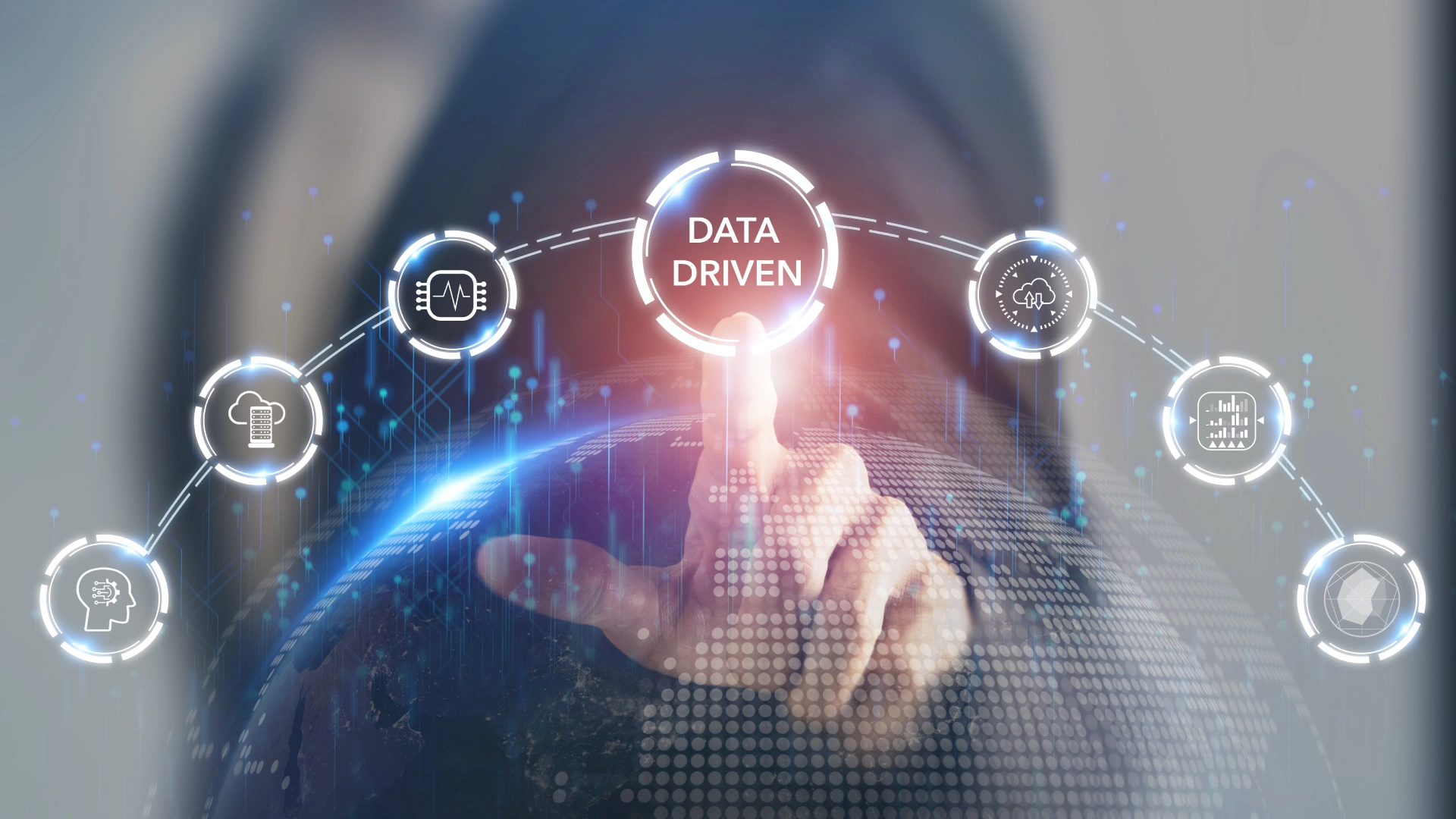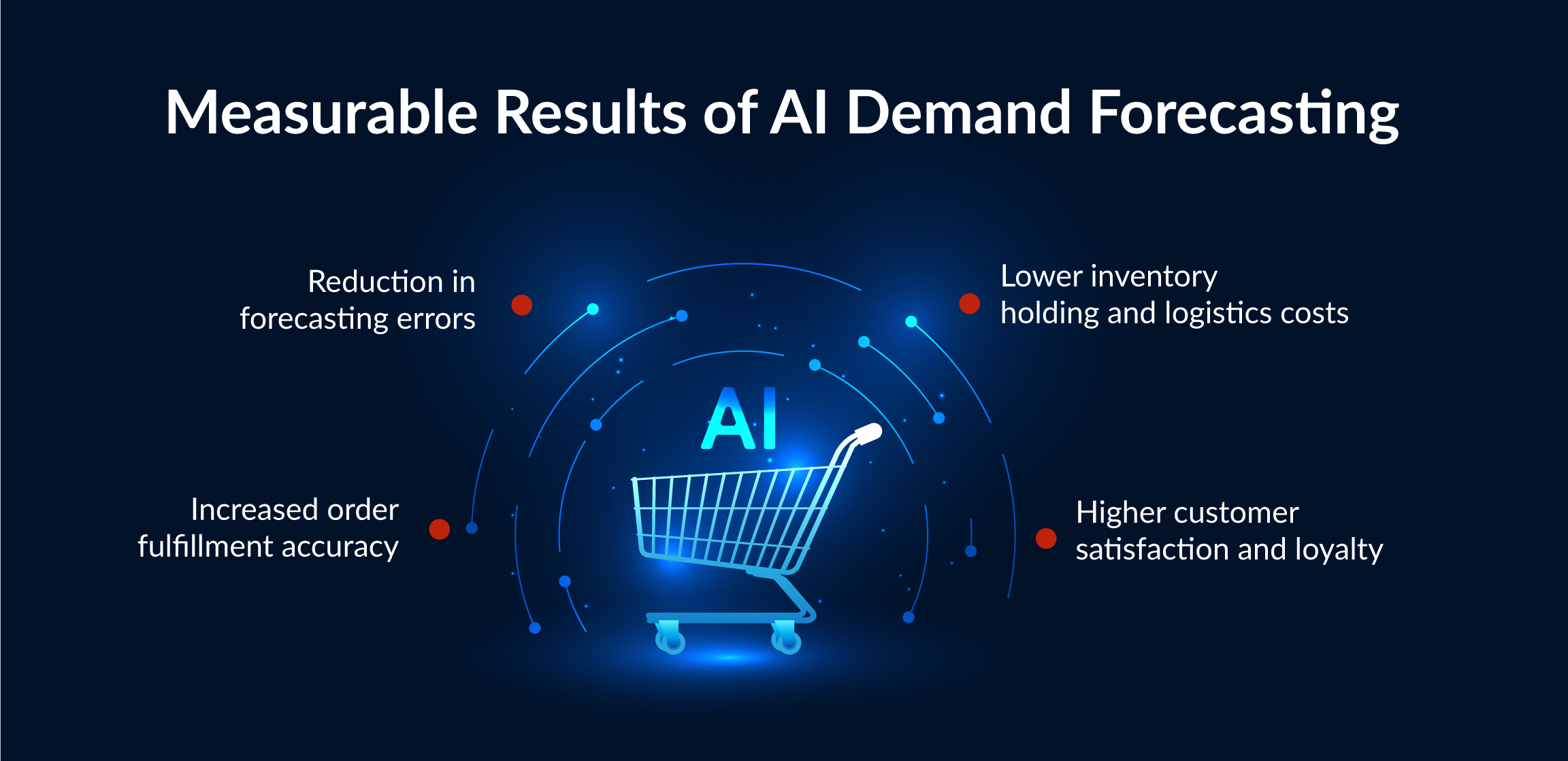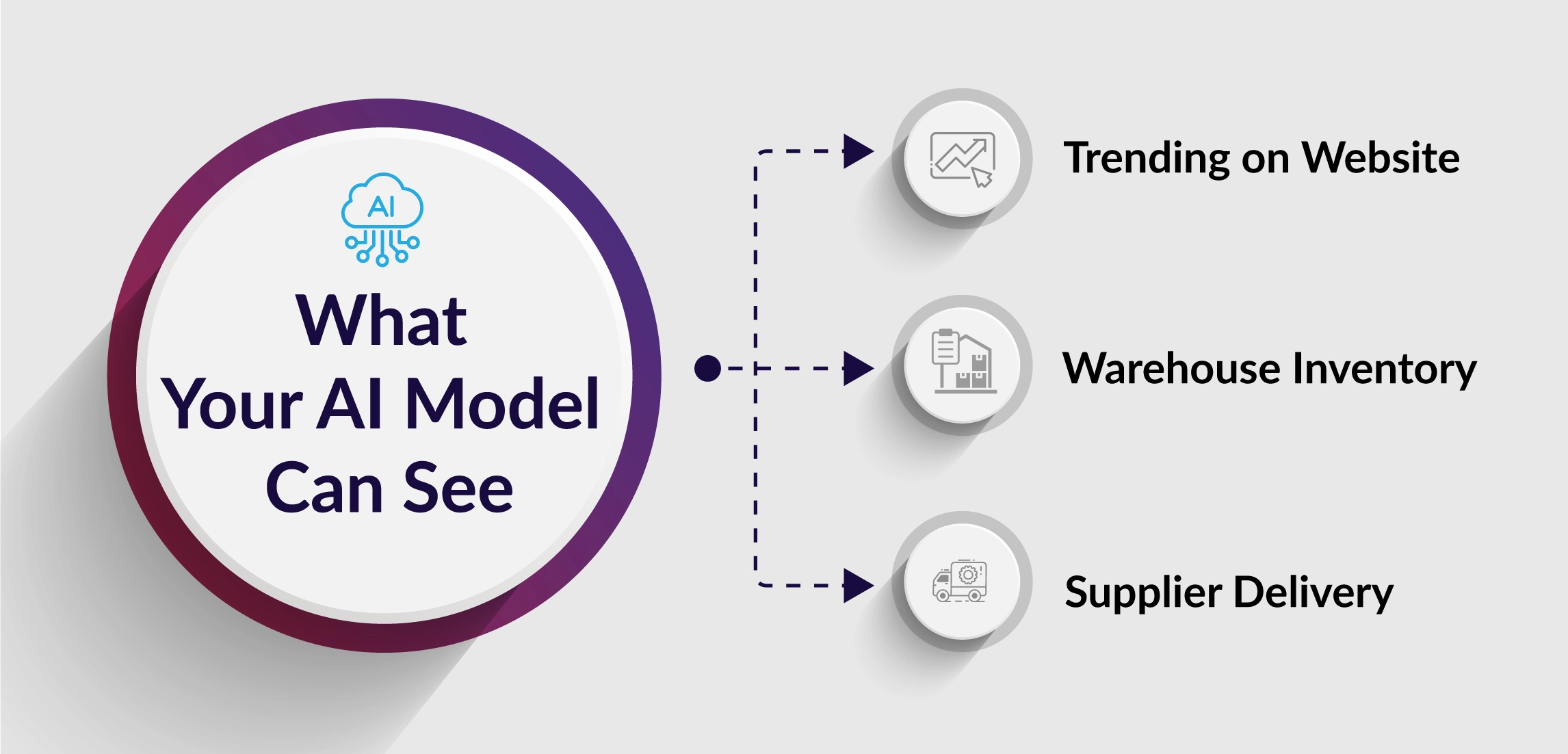Data‑Driven Demand Forecasting: How You Can Transform Inventory with Salesforce AI

If you're still using spreadsheets, last year's sales, or static reports to plan inventory, you’re not forecasting. You're guessing.
The retail landscape is always-shifting, you need real-time, intelligent, and data-driven demand forecasting powered by AI.
This blog shows you exactly how Salesforce AI tools like Einstein and MuleSoft make AI demand forecasting not only possible but practical. You’ll also learn how to move from reactive inventory firefighting to proactive, automated retail inventory optimization.
Measurable Results of AI Demand Forecasting

Here’s what retailers and manufacturers are already achieving with AI-powered forecasting:
- Reduction in forecasting errors
- Increased order fulfillment accuracy
- Lower inventory holding and logistics costs
- Higher customer satisfaction and loyalty
And most importantly—forecasts that learn, adapt, and improve over time.
How You Can Achieve It All With Salesforce AI?
You’ve seen what AI demand forecasting can do. Now let’s break down how Salesforce makes it real, at scale and inside the systems you already use.
Einstein for Demand Forecasting
Einstein is Salesforce’s built-in AI engine.
It analyzes:
- Historical sales
- Promotions and seasonality
- Local events and weather
- Real-time customer behavior
Instead of static reports, you get clear, explainable predictions directly in your Salesforce dashboard, no modeling or code needed.
MuleSoft for Data Integration
Forecasting is only as good as the data behind it.MuleSoft (a Salesforce company) connects siloed systems like POS, ERP, e-commerce, and even third-party APIs (weather, trends, traffic) to give you a unified demand view.

Your AI model can now see:
- What’s trending on your website
- What’s sitting in your warehouse
- What suppliers can deliver and when
That’s true retail inventory optimization, built on a single source of truth.
Salesforce Flow for Intelligent Automation
AI predictions without action? Just another dashboard.
Salesforce Flow turns those predictions into automated operations:
- Auto-trigger replenishments when stock dips.
- Alert planners before a stockout occurs.
- Send purchase orders based on demand surges.
It’s real-time orchestration without waiting on a meeting or spreadsheet.
Real-Time Visibility at Every Level
You can’t fix what you can’t see.
Salesforce shows real-time demand and risk exposure at:
- SKU level
- Store or warehouse level
- Channel, region, or segment level
You’ll know:
- What’s underperforming
- What’s overstocked
- What’s about to run out in 7 days
And because it’s mobile-ready, your team sees this live, wherever they are.
Forecasting Flexibility with AppExchange
Retail isn’t one-size-fits-all and Salesforce knows it.
From AppExchange, plug in forecasting tools for:
- Apparel size curve planning
- Grocery and perishables
- Promo lift forecasting
- Markdown avoidance
You extend Einstein’s power with solutions tailored to your exact business needs. It requires no custom builds.
How to Launch a Successful AI Forecasting Program
You don’t need a massive rollout to see impact. You just need to start smart.
1. Start with a Pilot
Pick one high-pain category or region. Test AI forecasts against your current method. Measure the gap. Prove the win.
Example: During spring, patio furniture is always over-forecasted? Start there.
2. Clean and Connect Your Data
Standardize SKUs, clean historical records, and use MuleSoft to connect all systems—POS, ERP, promos, and more.
Garbage in = garbage out. Better data = better predictions.
3. Train Your Team to Trust the Forecast
Bring planners and merchandisers into the loop early. Let them compare predictions vs outcomes. Create a feedback loop.
Adoption soars when the team feels like co-pilots instead of passengers.
4. Automate Replenishment with Salesforce Flow
Turn forecasts into action. Let the system:
- Reorder fast-moving products
- Preemptively transfer inventory
- Escalate exceptions automatically
5. Measure, Iterate, and Scale
Track these KPIs:
- MAPE (Mean Absolute Percentage Error)
- Fill rate %
- Inventory turnover
- Revenue saved from stockout prevention
Optimize models quarterly. Grow the program in phases. The longer it runs, the smarter (and more profitable) it gets.
Conclusion
AI demand forecasting when powered by Salesforce Einstein, MuleSoft, and Salesforce Flow gives you everything your current process doesn’t offer.Clarity, Speed, Precision and Automation.
It rewrites how your business sees demand. As the leading Salesforce AI consultancy, we help businesses unify fragmented demand signals and implement tailored AI forecasting models.